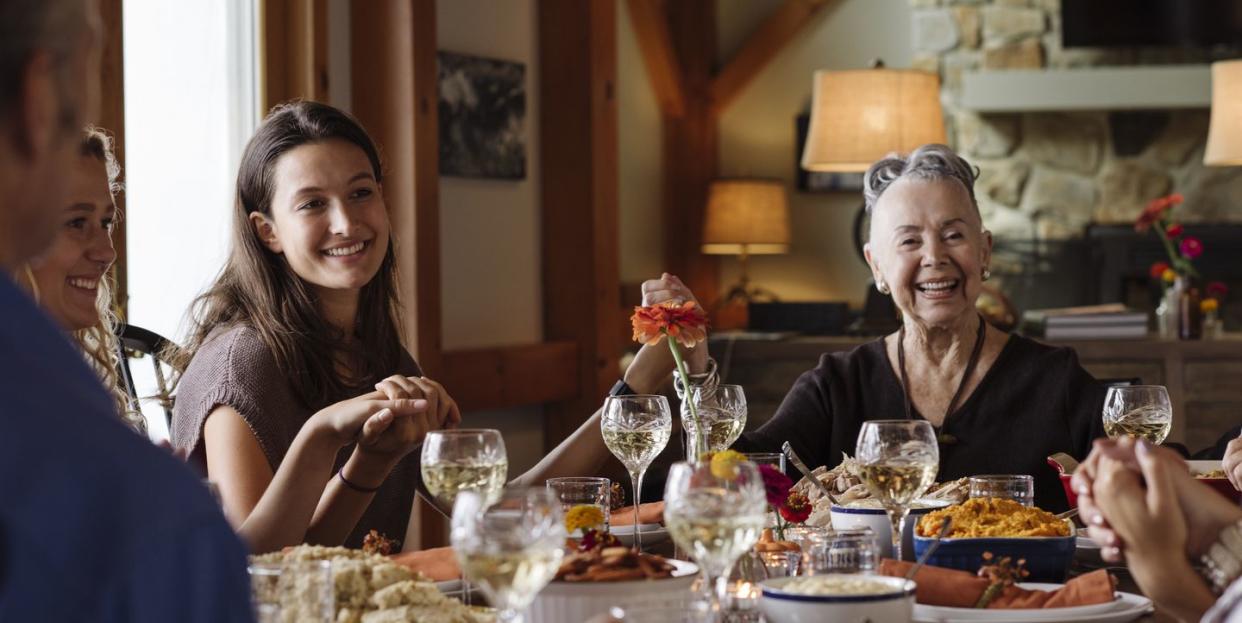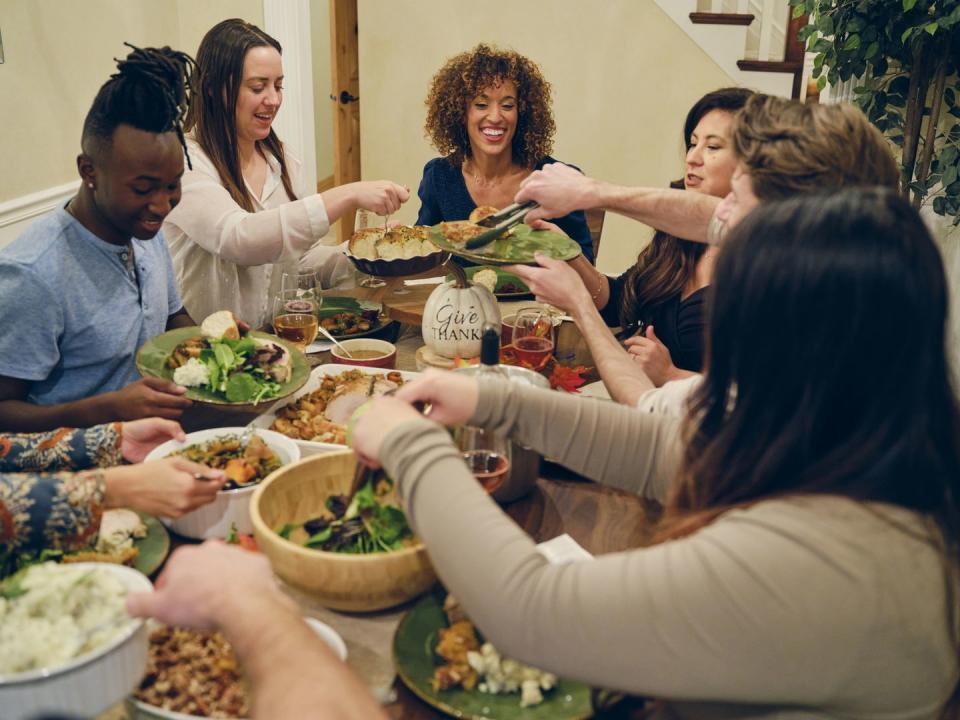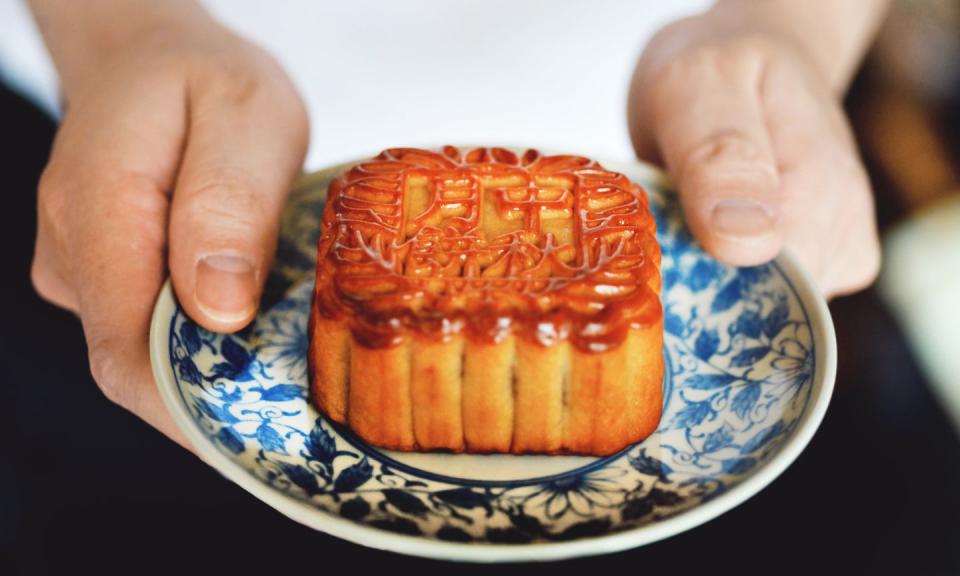Learn What Other Countries Celebrate Thanksgiving

How familiar are you with Thanksgiving in other countries? In the United States, our celebrations involve perfecting pie recipes, decorating our home for company, and crafting captions for our Turkey Day Instagrams. Traditions season the holiday that date back to the very first Thanksgiving in the United States.
Even though the reason for hosting Thanksgiving is uniquely American, communities across the globe have their own version of this holiday. They don't all involve turkey or football, but each one centers around giving some form of thanks, gathering with family, and creating meaningful memories.
Learn how families and friends on opposite ends of the equator celebrate Thanksgiving. Then, check out these inspirational Thanksgiving quotes and poems to share to share during your gathering this season.
Canada

While we're piling pumpkins into carts for carving and scrolling through TikTok for Halloween costume-inspo, Canada is prepping their kitchens for a feast Americans won't think about for another month. Our maple leaf mates celebrate a more low-key version of Thanksgiving, or Action de Grâce in the French-speaking province of Quebec, on the second Monday in October.
That date has jumped around over the years to align with different historical events, including Armistice Day, the restoration of peace with Russia, and King Edward VII's coronation. But, in 1957 Governor General Vincent Massey made the second Monday in October official by proclaiming it “A Day of General Thanksgiving to Almighty God for the bountiful harvest with which Canada has been blessed.”
Not only do Canadians celebrate it on a different date, but the holiday also has seniority on American Thanksgiving. Canadians first commemorated Thanksgiving in 1578 to celebrate Sir Martin Frobisher and his crew's safe arrival in the Eastern Arctic. That first meal wasn't turkey and mashed potatoes, but an appetizing spread of salt beef, biscuits, and mushy peas.
Luckily, the meal has evolved since, and Canadians mainly enjoy the same traditional foods we do in America with a few exceptions. In Newfoundland they often prepare a Jigg's dinner—boiled meat served with a side of split pea pudding. Ontario might swap pumpkin pie for flaky butter tarts, a pastry filled with raisins, walnuts, or pecans.
Brazil
Thanksgiving in Brazil, called Dia de Ação de Graças, is a case of monkey see, monkey do. In this instance, the Brazilian ambassador to the U.S. saw Americans enjoying a day of eating delicious food and decided Brazil should do the same. He told then-President Gaspar Dutra of the festivities he observed after a trip in the 1940s and since it's become an unofficial holiday in the country.
Thanksgiving in Brazil is essentially the same, even down to the date of the fourth Thursday in November. Instead of having a march of our favorite inflated cartoon characters, Brazilians parade down the street and cap it off with a carnival. A church service giving thanks to the almighty precedes the Carnival-like celebration.
Germany, Austria, and Switzerland
Fall back a few months, and you'll land on Erntedankfest—a similar concept to American Thanksgiving celebrated by rural communities in Germany, Austria, and Switzerland. The "rural festival of thanks" is usually held in late September or on the first Sunday of October. Residents thank God for the gifts of harvest by holding church services, throwing parades, and playing music.
Aside from both holidays centering around gratefulness, the similarities between American Thanksgiving and Erntedankfest stop there. While Turthahn (turkey) is popular throughout German-speaking countries, during Erntedankfest they might opt to eat Masthühnchen or De Kapaun, (chicken and rooster respectively).
There also isn't the same emphasis during this festival to travel long distances and gather with family. It's contained in the rural areas of these countries and most people throughout Germany may never experience Ertedankfest unless they seek it out.
The Netherlands
Did you know the Pilgrims made a pitstop on their way to Plymouth Rock? According to the Smithsonian, a community of Pilgrims spent a period of time in the city of Leiden in the Netherlands. Despite just being a blip on their journey to the new world, many residents in Leiden still celebrate an American Thanksgiving every year. However, the focus here is less on the food. Instead of a meal, residents convene in Pieterskerk, a 900-year-old church, to "celebrate the perseverance and good fortunes of the early American settlers."
Grenada
While some Thanksgivings stretch back to the times of lace collars and oil lamps, others are as young as a millennial. Grenada, an island country in the eastern Caribbean Sea, only first started celebrating Thanksgiving 30 years ago. When the U.S. military restored order in the country after their communist leader Maurice Bishop died in 1983, locals surprised the soldiers with a full-course American-style Thanksgiving. The gesture grew into a holiday the people of Grenada continue to celebrate.
China

The full moon means more for China because it symbolizes a family reunion in Chinese tradition. During the Moon Festival, Chinese families get together, celebrate, and give thanks for a good harvest. Sound familiar? But where Americans have one day, China takes three. During the Mid-Autumn Festival, families hold a three-day feast complete with lantern lighting, dragon dancing, and mooncake making.
Mooncakes, not to be confused with the MoonPies of Mobile, are pastries filled with sweet bean or lotus seed paste. Because the festival takes place during the Harvest Moon, the full moon closest to the Autumnal Equinox, these pies are also sacrificed to the one in the sky.
Japan
This one is closer to a U.S. September holiday. Japan celebrates Kinrõ Kansha no Hi, or "Labor Thanksgiving Day" every November 23. Like Labor Day in the U.S., Kinrõ Kansha no Hi is a public holiday to honor workers in the community.
There aren't big meals or parades, but one of the largest events is the Nagano Labour Festival sponsored by local organizations that bring awareness to environmental and human rights issues. In another tradition, elementary-age children make crafts for labor workers such as police officers, firefighters, and hospital staff.
Liberia
According to NPR, Liberia is the only other country that officially celebrates Thanksgiving. It marks when freed American slaves founded the country in 1822 and takes place on the first Thursday of November. Depending on who you ask, Liberians may choose to attend a church service followed by a meal with family or use it as a day of relaxation. There are no official traditional foods eaten during Thanksgiving in Liberia, but some staples include rice, yams, collard greens, and cassava.
South India
If you thought your family's Thanksgiving traditions were elaborate, Pongal has you beat. Southern Indians, the Tamil, thank the Sun god, nature, and everyone and every animal who supports agriculture by hosting a four-day festival.
They observe it during the Tamil month Thai, which typically falls around January, but since it's based on the solar calendar it can vary. According to Business Insider, 'Pongal,' which translates to "overflowing" is a traditional dish made with milk, ghee, and rice. The Tamil culture regards it as a symbol of prosperity associated with abundance and affluence. During this festival of harvest, families share elaborate meals together, give thanks, dance, and say prayers.
Ghana
After suffering through a time of famine in the 16th century, the Ga people were finally blessed with rain to grow their crops and celebrated with a feast. This grew into a tradition known as the Homowo Festival. Homwow, which means "hooting at hunger" in the Ga language, stretches over three months from May until August. Traditional dances, singing, and street parades take place during this time. Of course, food is featured throughout including palm nut fish soup, yams, and a corn powder dish.
You Might Also Like

